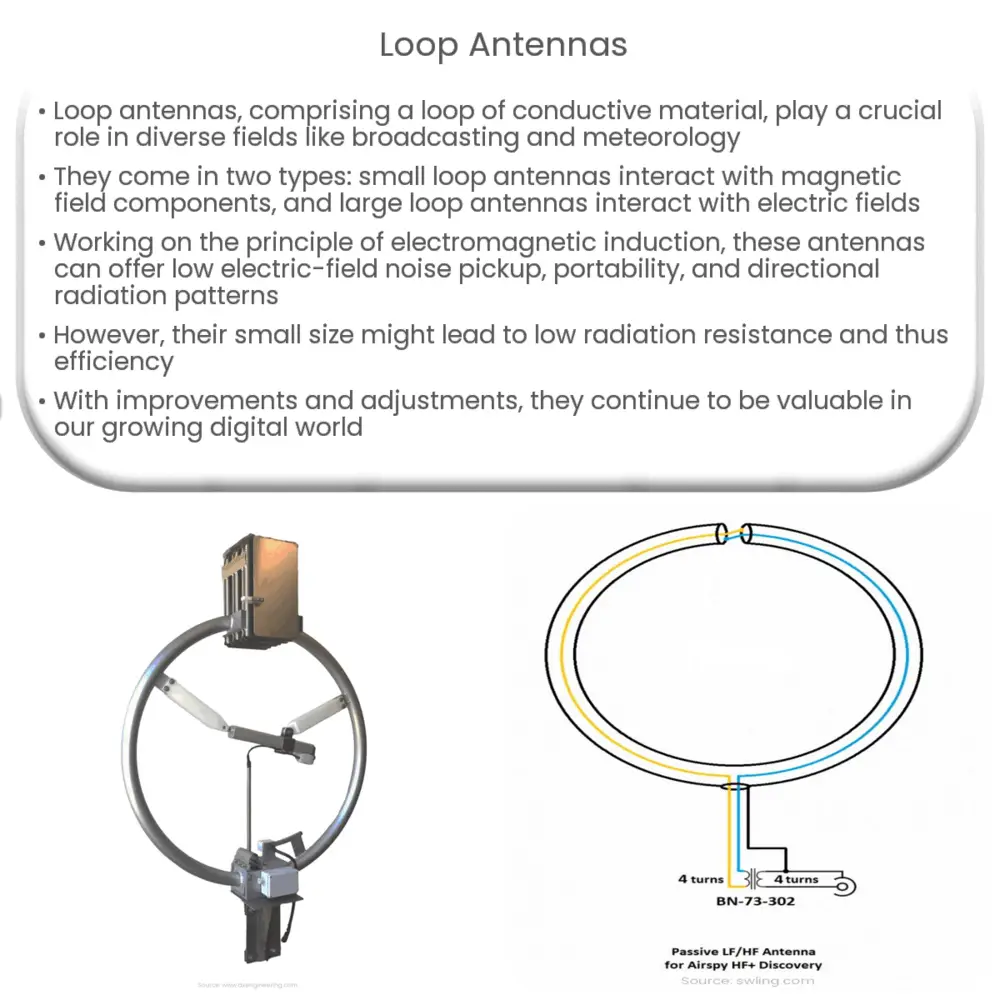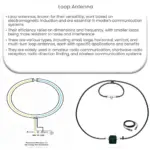Explore the world of loop antennas, their types, working principle, advantages, challenges, and applications in modern communication systems.

Introduction to Loop Antennas
Loop Antennas, a fascinating aspect of radio and communication technology, plays a significant role in various applications ranging from broadcasting to amateur radio, and from military to meteorological observations. Understanding this type of antenna will provide a broader perspective on how our communication systems work.
Understanding Loop Antennas
A Loop Antenna, often referred to as a magnetic loop, is a radio antenna that comprises a loop of wire, tubing, or other electrical conductors. The loop can take on various shapes such as circular, square, or triangular, each with its unique properties and characteristics. But the most common form is the circular loop due to its simple design and ease of implementation.
Types of Loop Antennas
- Small Loop Antenna: This antenna, also known as a magnetic loop, has a circumference smaller than one-tenth of the wavelength it’s designed to receive or transmit. It primarily interacts with the magnetic field component of an electromagnetic wave.
- Large Loop Antenna: Conversely, a large loop antenna, often known as a resonant loop, has a circumference close to the intended wavelength. It interacts more with the electric field component of the wave.
Working Principle
Loop antennas work on the principle of electromagnetic induction. When an alternating current is applied, it induces a magnetic field around the loop. This field, in turn, induces a current in a secondary loop (if present), thereby enabling the transmission or reception of signals. The antenna’s impedance matches that of the connected receiver or transmitter, typically achieved with a tuning capacitor, allowing efficient power transfer.
Key Advantages
Loop antennas, particularly small loops, offer several key advantages in the world of radio communication. They exhibit low pick-up of electric-field noise, making them excellent for use in locations with high interference. Their compact size allows for portability and flexibility in placement. They also show a relatively directional radiation pattern, which can be beneficial in certain scenarios.
Applications of Loop Antennas
Loop antennas are versatile and find use in a broad spectrum of applications. In broadcast receiver systems, they serve as built-in antennas for AM radios. Large loops, on the other hand, are employed in direction finding equipment. They are also utilized in low-frequency RFID (Radio Frequency Identification) systems.
To be continued…
Challenges and Limitations
While loop antennas offer numerous advantages, they also come with certain challenges. The small size of a loop antenna, particularly a small loop, leads to a low radiation resistance, making them less efficient compared to other antenna types. Tuning such antennas can also be tricky, as they often require a high voltage variable capacitor to achieve resonance at the desired frequency.
Improving Loop Antenna Performance
The performance of loop antennas can be improved through several measures. Enhancements in the shape and construction material of the loop can contribute to better performance. Implementing a preamplifier at the antenna’s base can compensate for its inherently low gain. Additionally, using a variable tuning capacitor can help in adjusting the antenna’s resonance to the desired frequency.
Loop Antennas in the Modern World
In today’s digital age, loop antennas are making a comeback, primarily because of their noise rejection capabilities and compactness. They are becoming popular in the amateur radio community for HF (High Frequency) band use. Moreover, with the rise of the Internet of Things (IoT) and wireless communication, loop antennas have found a significant role in short-range wireless devices and RFID systems. Their ability to perform in environments with high interference makes them invaluable in densely populated areas.
Conclusion
In conclusion, loop antennas, despite their limitations, offer a unique set of advantages, making them a valuable asset in various fields of communication. The technological world is constantly evolving, and with it, the utility and sophistication of loop antennas are also increasing. As the demand for effective and reliable communication systems grows, the importance and relevance of loop antennas are only likely to increase. Whether it’s the compact small loop antenna or the large resonant loop, these devices have and will continue to impact our communication landscape profoundly.




